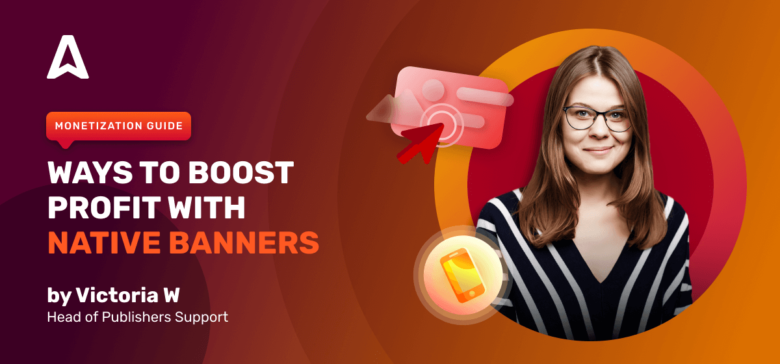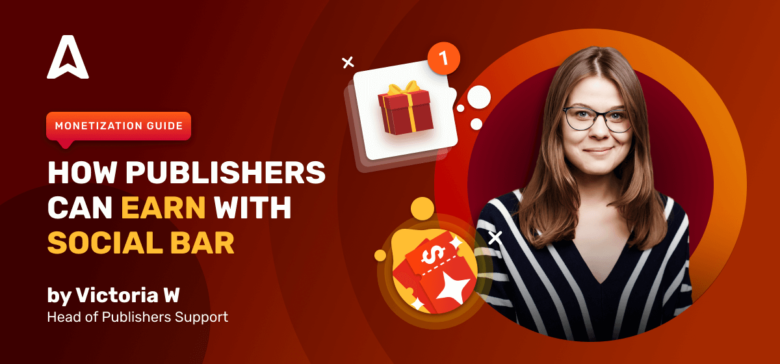To any publisher, a CPM drop is always a headache. The core metric that marks how profitable your website can change within a day and that it’s ok. But it’s pretty harsh when your CPM drops because of a sad mistake that you could have avoided. You will be able to prevent them from now on.
Some publishers think of website monetization as a single-shot activity. They choose an ad unit, find a place to put it, and then forget about it. That’s a weak tactic. You can earn more and win higher bids if you control and operate your ad formats. Let’s list some typical pitfalls that lead to income loss and see how to avoid them.
1. Poor ad viewability that leads to a CPM drop
If users don’t scroll enough to see ads or merely don’t visit pages where you place scripts, you get zero CPM.
Your homepage might generate massive traffic, but if users use it only to navigate to other content and never scroll down half of the page, you will lose lots of ad views.
E.g., when users don’t scroll enough and see less than 50% of a native Banner, your ad impressions are not counted, so the CPM becomes lower.
Tip 1
Use online services that allow for building a scroll map of your web pages. They show how many users reach those spots where you put advertising codes.
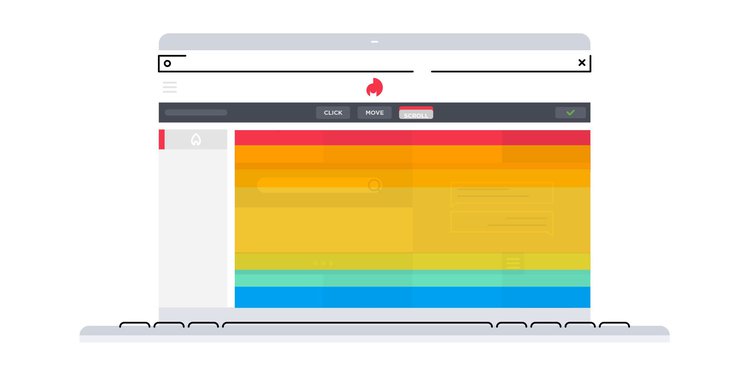
Hotjar is one of the best-known tools for building heat maps and scroll maps
Tip 2
If you don’t get enough traffic for the entire page, try placing at least one ad code above the fold. It’s the first visible part of the page available without scrolling down.
‘Above the fold‘ is a common definition for content that comes first on a web page; the first visible part of the page.
Tip 3
The more effective pages you create, the better they work for the CPM growth. You will get more organic traffic that will be distributed across multiple pages.
Use on-page SEO techniques to increase traffic volume on your key pages. Write powerful content that will add value to important topics, and remember the rule “one keyword phrase per one article.”
2. Ads are viewable, but they collapse navigation (UX)
As a website owner, you have to balance between your monetization goals and your readers’ needs.
Tip 1. Don’t place banners near the navigation buttons
You should avoid placing ads near navigation or other essential elements to avoid blank clicks. Those clicks are bad in all aspects:
- users get irritated and stop visiting your website;
- they close advertising pages, and that signals to advertisers that you send them blank views;
- they close Popunders immediately after they start downloading – you miss ad impressions.
Tip 2. Ads mustn’t overlap your content
You will probably ask, “But pop-ups and interstitials do block the entire content,” but that’s another case. These ads appear for a few seconds and can be easily closed. We are talking about advertising that stays on the screen as a barrier between a user and content. It can happen if you place, say, a non-responsive desktop banner format on a mobile page.
3. Too many ads on a web page
After spotting a highly viewable place, many publishers fall into this trap: they put several similar ad codes there. And it often results in a “banner blindness” effect, which means users refuse to click on ads or, worse, leave the page.
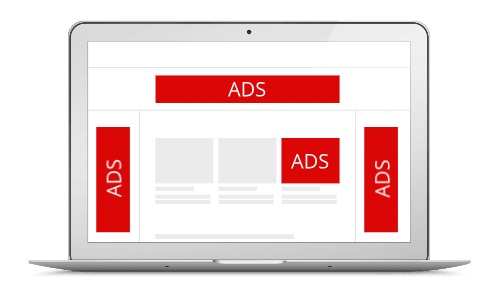
Tip 1. Diversify your revenue between different formats
Ad oversaturation may lead not only to CPM drop but to overall website traffic decrease.
Instead of placing multiple banners and making your website look like an old newspaper, combine ad codes. E.g., you can put a banner, a push ad, and a Direct Link on one page, and they will look non-intrusive.
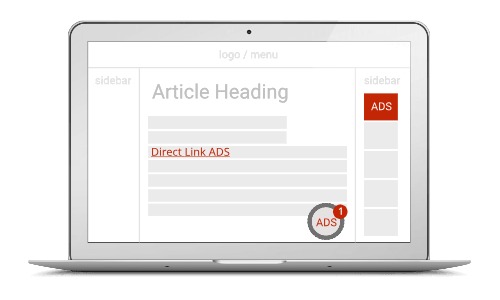
Tip 2. Adjust ad density with website purpose and value
Think of your website as a tool: will users be interested in going through ads to get what they want? If you own an online free service platform, they will. They pay with ad views for using your service for free. App developers widely use this mechanic. All free Android apps are full of ad content. By contrast, putting too many ads inside tutorials will collapse your SEO and traffic monetization strategy if you own an educational blog.
4. Two Popunder codes on the same page or in the “<HEAD>” part
Popunders have their own specifics. Users invoke them by hovering on clicking on any web elements. That’s why pop ads are placed in the “<HEAD>” part of the HTML code.
Placing two Pop scripts is similar to placing two Google Analytics counters: the codes may conflict, resulting in wrong statistics.
Tip for publishers
Instead of adding one more Popunder, ask your manager to help you change ad frequency. We will talk about this setting later on.
5. Multiple ad networks’ scripts can provoke a CPM drop
Exactly the same as with Popunder codes, two or more ad networks’ scripts can conflict or even work improperly, leading to a CPM drop. What’s more, you will find it pretty tough to determine which ad network performs better as there will always be one code to serve first. The third drawback is additional code that may affect your page speed.
Tip
You can test as many ad networks as you wish but in turns. This will give distilled information about the network performance:
- quality of ad offers;
- ad formats’ profitability;
- key metrics, including CPM.
One month is ok for a test if your traffic is under 1,000 visitors daily. If you drive lots of impressions, 2 weeks will be enough.
6. An ad format does not suit your audience
Remember the tip to look at your website as a helpful tool? It’s time to use it once again. You may find a viewable place, take UX into account, take care about frequency, but users avoid clicking on ads or click and close advertising pages.
Tip
You need to match ad formats with the web content and users’ activity. Some audiences will not accept Popunders as they appear in a new browser tab and look suspicious. Some visitors will complain about banners (especially if there were no ads before you placed them).
What to look at? First off, match an ad format with the website’s purpose and user session duration. If your visitors only come for, say, shortening an URL or converting a PDF file, two or three banners above the fold will be ok. The screenshot below illustrates this example.
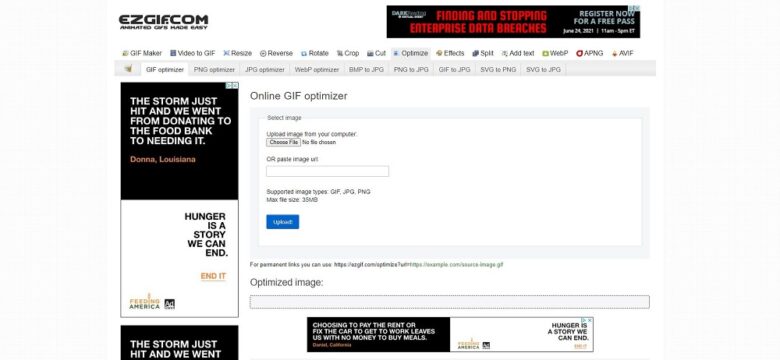
When your users stay on a website for a longer time, they navigate between pages, and open multiple tabs, showing them 10 full-screen interstitials is a direct path to a CPM drop if not plummet.
7. You didn’t think of CTR and conversions
Advertisers buy traffic with several pricing models. They can buy only ad views (or impressions), but many of them pay for actions and clicks (CPA and CPC pricing.) Moreover, even if they pay for impressions, they always keep in mind a commercial goal: sales, downloads, installs, and other conversions. If your traffic sends quality conversions, you will earn more. Of course, these should be real conversions and clicks, and never bot traffic.
Tip 1
Avoid grey techniques of placing ads near or instead of the most clickable spots (see Mistake No1). Ad networks can track these clicks made by mistake; they’re false and can only lead to a CPM drop.
Tip 2
Use Native Banners that melt into web content and correlate with users’ interests. Readers are more likely to click on Native Ads while reading a blog post rather than get engaged by a classic banner.
Tip 3
Keep in mind the novelty effect. Users are highly likely to click on something they find interesting. Social Bar is exactly this type of ads. It teases users making them willing to click and visit a target advertising page.
8. Wrong ad frequency for Popunder
Higher frequency doesn’t always mean higher CPM rates. Some ad networks will adjust this setting according to your request, but it may end up with several troubles. Like when? For instance, when you have less than 80% unique traffic. Users will see pops too often, and this may annoy them a lot.
With Adsterra, you get a balanced Popunder frequency which proved to be UX-safe and profit-driving. However, you can apply for a custom change of frequency. In this case, our Optimization team will analyze your website traffic with several metrics: user session duration, the volume of unique traffic, CTRs, bounce rates, and others. They will only advise on a higher frequency if there are chances to increase your revenue without a drastic CPM drop.
9. Not enough content for instream VAST ads
This mistake often arises with video formats. Publishers put VAST codes inside video players where they don’t provide enough engaging content. You may have enough traffic and the best player embedded, but with lacking content, users will soon get bored and leave. VAST pre-roll only pays well when you serve rich, valuable, renewable content.
Please note
A contrasting situation is with outstream videos when you put advertising codes inside players with no content. Outstream ads autoplay as soon as users navigate to them.
10. Underestimating the Anti AdBlock feature
This is not a mistake that can provoke a CPM drop, but, probably, a reason for traffic loss. With Adsterra, publishers can limit content views by placing an adblock-wall asking users to turn off their ad-blockers to carry on reading your web content. We recommend not ignoring the Anti AdBlock solution, especially when you have a stable flow of traffic and valuable content. A friendly request to accept ads on your website can help you save organic traffic and achieve higher CPM.
How to use the Anti AdBlock feature
- If you have just signed up as the Adsterra publisher, you can request the Anti AdBlock solution from your account.
- On the Websites page, find the REQUEST ANTI-ADBLOCK FOR ALL SITES button and click on it.
- You will get your new scripts soon after that. You will need to replace all previously added scripts with new ones.
- Active Adsterra Publishers can apply for this solution in the live chat.
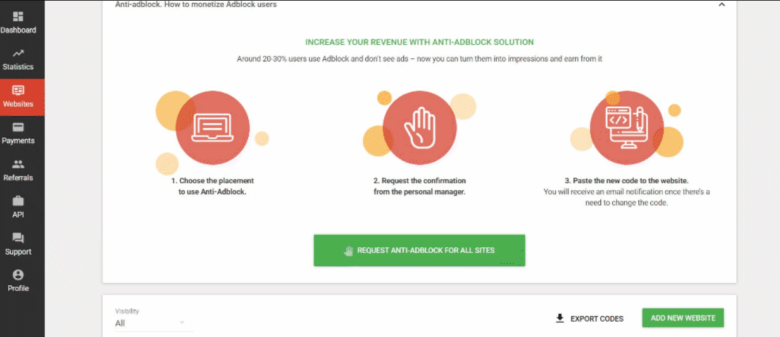
11. Poor ad combination triggers the CPM drop instead of improving it
We mentioned earlier that you could achieve larger payouts by combining different formats. But what if you do it wrong and the CPM dropped? Well, there is no general rule here. But typically, your visitors will consume ads better if there is a mixture of engagement and nativity. It means that half ad formats should engage, half of them blend with the authentic content.
What works well is when one of the formats remaining totally native:
- Push ads (Social Bar) + Native Banner
- Popunder + Social Bar
- Social Bar + Direct Link
- Native Banner + VAST
BONUS advice: forget about rules and think of your audience
- Don’t follow the rules as they are; always put them on your website as if they were hats. These are your website users who will have to wear them.
- For some audiences, multiple ads are ok if you provide them with free services or content. Some readers are too sensitive when you disrupt their reading with ads. But you now know that native ads will be a friendly solution here.
- Never underestimate CTRs and clicks (you can check these metrics on your Statistics Dashboard). Ad impressions invest in your CPM rate, that’s true, but what advertisers do care about are clicks and conversions. Social Bar push ads have become CTR leaders among other formats.
- Remember to refresh ad locations. Even if you’ve found a perfect spot for banners, you will sometimes need to relocate them as visitors get used to the website layout and simply avoid looking at “advertising locations” — the notorious “banner blindness” effect.
- Experiment with ad units, and whenever you feel you need assistance, reach out to Adsterra managers who know everything about websites’ categories, CPM rates for traffic, and better ad frequency. These pros will help you avoid the CPM drop and stay on a roll.

